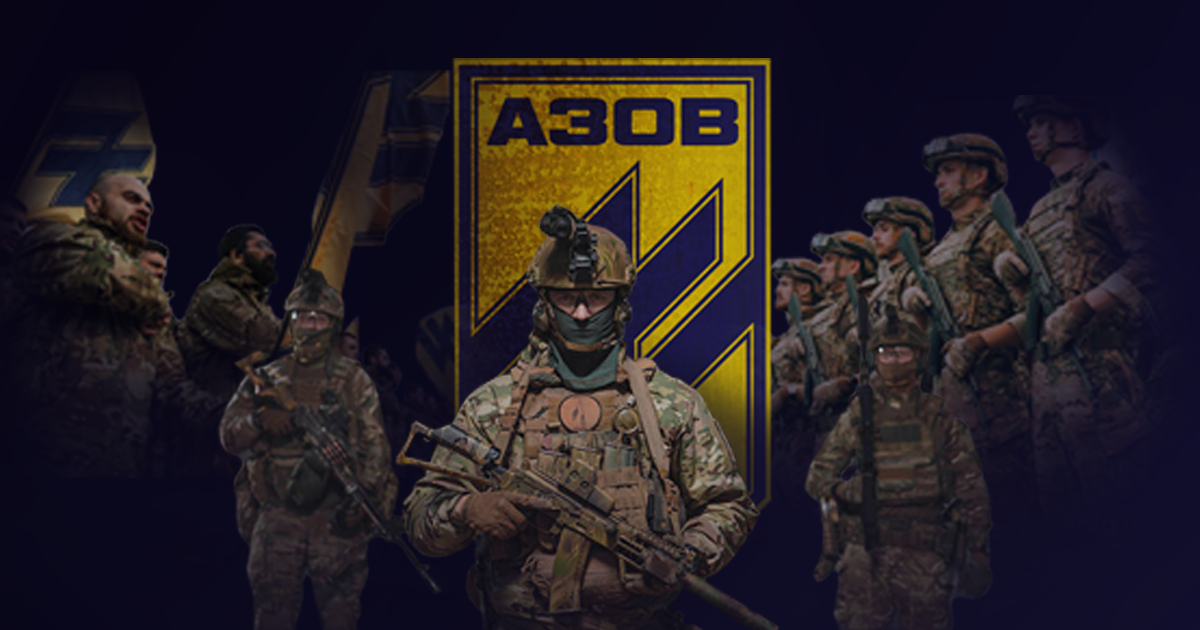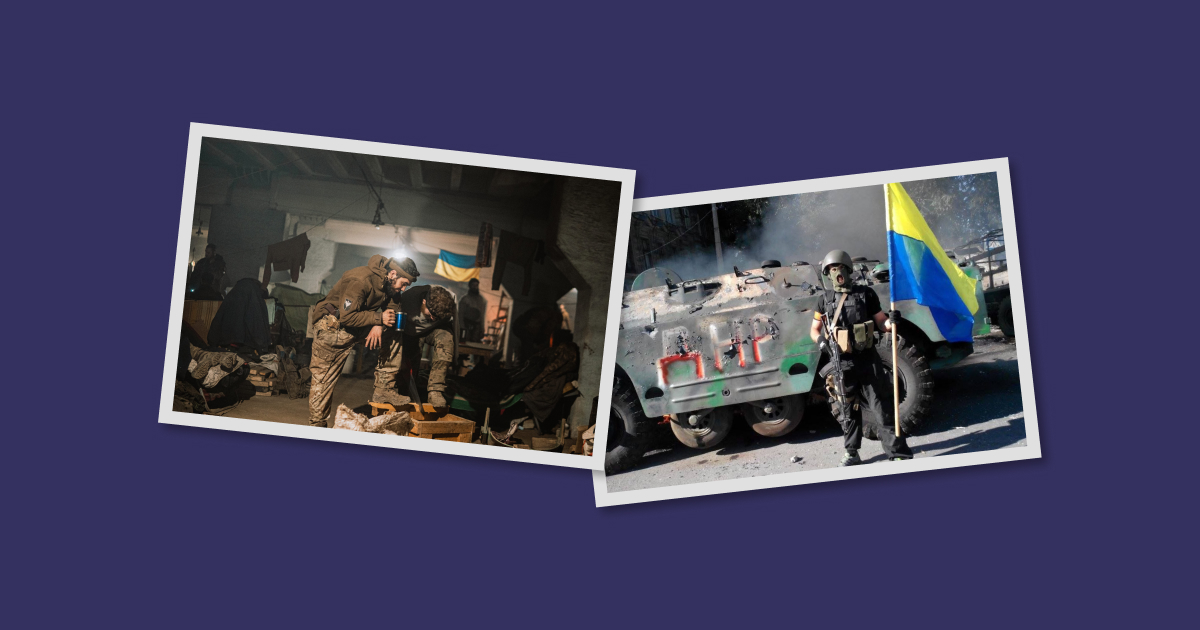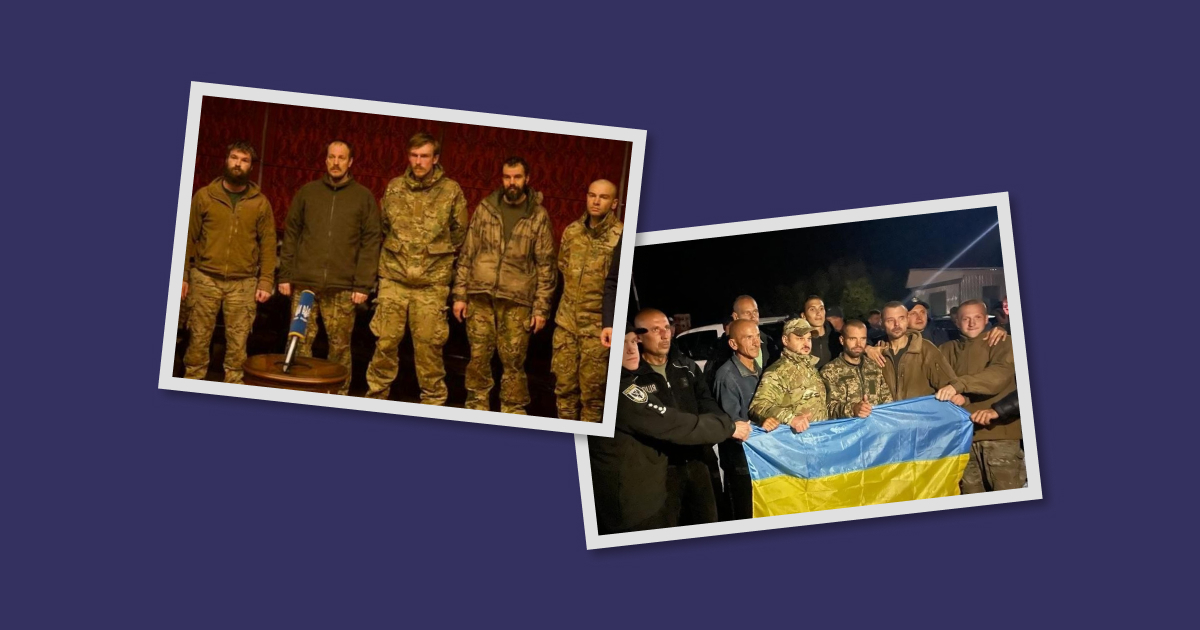Azov Brigade is nine years old: How Russian propaganda discredited the unit and what consequences it had during the defence of Mariupol

On May 5, 2014, Azov was established in Berdiansk, which is now occupied by Russian troops, as a battalion of the Special Tasks Police Service of the Ministry of Internal Affairs, later as a Special Operations Detachment "Azov" of the National Guard of Ukraine (NGU), and today as an NGU brigade.
In March last year, Azov became a symbol of courage and invincibility for most Ukrainians — together with the Marines, the National Guard, border guards, and law enforcement units, Azov defended besieged Mariupol for over 80 days.
Svidomi talks about the history of Azov, the liberation of Mariupol in 2014, as well as how Russian propaganda tries to discredit the unit, and what consequences it had during the battles for Mariupol in 2022.
History of the Regiment
Azov was established on May 5, 2014, in Berdiansk. A month later, in June 2014, Azov fighters, together with the Dnipro Special Battalion, the National Guard, and a special unit of the Ministry of Internal Affairs, launched an operation to liberate Mariupol. At the time, this blocked the Russians' ability to advance towards the Zaporizhzhia region and build a land corridor to the already occupied Crimea.
In the autumn of 2014, the battalion was upgraded to a regiment and was incorporated into the National Guard as a Special Operations Detachment.
In the winter of 2015, the regiment liberated several settlements east of Mariupol as part of the Pavlopil-Shyrokyne operation: Pavlopil, Kominternove (now Pikuzy), Berdianske, Shyrokyne, and Lebedynske. This allowed the front line to be shifted 20 kilometres from Mariupol.

From 2016 to 2019, Azov practically did not take part in hostilities in eastern Ukraine; the unit trained at its base near Mariupol. In 2019, they carried out combat missions at the Svitlodarsk arc fighting for control of Svitlodarsk.
After the start of the full-scale invasion, Azov and other units of the Defence Forces defended Mariupol. The operation lasted 86 days.
What did Russian propaganda say about Azov?
Since 2014, Russia has been discrediting volunteer units in Ukraine. First, the Right Sector was at the centre of Russian propaganda, then Azov.
This propaganda is aimed at both Russian and Western societies to create a negative image not only of the volunteer units but of Ukraine as a whole.
Russia has based its propaganda against the unit on three main points: symbolism, ideology, and organisational structure.
Russian propaganda equates the unit's symbols with the Wolfsangel rune used by some Nazi German units during World War II. However, the first chevrons of the unit featured a monogram of the Latin letters "I" and "N," which stands for the Idea of the Nation.
The letter "N" indicates the nation-centricity of Ukrainian ideology; "I" with its pointed ends symbolises the unrestrained nature of ideas, the superiority of the ideal over the material. In addition to the idea of the nation, the old-style insignia featured the occult Black Sun symbol, which is indeed used by right-wing movements but is not on the new-style chevrons.
Russian propaganda spreads the narrative that the unit's ideology is based on racism, neo-Nazism, anti-Semitism, and other forms of xenophobia. However, representatives of many nationalities have served and continue to serve in the ranks of Azov, including Crimean Tatars, Georgians, Croats, Greeks, Russians, and Belarusians.
The thesis that neo-Nazi ideology is widespread in Ukraine is the most popular among Russian propagandists. As for the unit, the regiment's leadership does not deny that there were people with dubious reputations in Azov when it was formed in 2014.
"I can't say we had no ultra-radicals from the beginning. There were some, but they were filtered out over time, and some of them were expelled," says Sviatoslav Palamar, deputy commander of the Azov regiment.
Since 2017, there are no radicals in the regiment, and on March 28, 2022, Azov published an appeal to Russians in which it condemned Nazism and Stalinism.
The ideology that individual members of the unit professed or profess now is Ukrainian nationalism. However, this ideology is generally shared by members of various military formations in Ukraine and members of society in general. As an official armed formation, Azov does not have a separate ideology.
Another point on which the Russians built their propaganda was the organisation of the unit itself. The Russian media portray Azov as an uncontrolled armed formation, even though since 2014, the unit has been officially part of the National Guard, which in turn reports to the Ministry of Internal Affairs.
However, Russia uses the fact that Azov is a political movement. In particular, this opinion is based on the fact that the founder and first commander of the Azov regiment, Andrii Biletskyi, was the leader of the National Corps party in 2016.
The unit is organisationally independent, and Biletskyi founded the party after he had left the unit.
Russian narratives in Western media and their consequences
Russian narratives about Azov have spread to Western media. Some outlets spread similar theses to the Russian ones about a "neo-Nazi battalion," "far-right radicals," "far-right militia," "Nazi battalion," etc.

These accusations were made against the regiment for eight years, including at the beginning of the full-scale invasion, by The Telegraph, The Times, The New York Times, and Vice.
This led to the fact that the US budget for 2018 prohibited the transfer of weapons and spending any amount of military aid to Ukraine for the needs of the regiment. This amendment was proposed by Congressman Ro Khanna of the Democratic Party, who was supported by both Democrats and Republicans.
Ro Khanna described his proposal the following way: "Ideas of white supremacy and neo-Nazism are unacceptable and have no place in our world. I am pleased that the approved budget will protect the United States from providing arms and training to the neo-Nazi Azov battalion."
In 2019, 40 US House of Representatives' members signed an appeal to Secretary of State Mike Pompeo demanding that the Azov Regiment be added to the Foreign Terrorist Organisation list.
"The Azov Battalion is a well-known ultranationalist militia organisation in Ukraine that openly invites neo-Nazis into its ranks," the congressmen wrote in their letter.
At the time, the State Department did not support this appeal for unknown reasons, but the unit did not receive any weapons.
Today, it is impossible to say whether the presence of US weapons in Azov would have made a difference to the course of the fighting in Mariupol in March 2022. However, a sufficient supply of weapons and ammunition is one of the many factors that can save the lives of military personnel.
How did Russian propaganda work in March 2022?
In March 2022, when the battles for Mariupol were underway, Russian propaganda began to accuse Azov of what the Russian military was actually doing.
The Centre for Countering Disinformation found that Russians distributed leaflets about Russia's alleged fight against Nazi groups, including Azov. Later, to justify the bombing of a maternity hospital in Mariupol, Russia claimed that Azov fighters were hiding in the premises.
"In the absence of considerable success in the discrediting campaign against Azov, a month ago [in April 2022, during the defence of Azovstal — ed.], the Russian propaganda machine started an informational and psychological operation aimed at bringing Ukrainians into the state of despair. The main goal is to desecrate Azov as a peculiar symbol of the struggle of Ukrainians and raise doubts about military’s bravery and endurance," the Centre believes.
According to Mariupol residents, despite the fighting for the city, the regiment's soldiers also tried to help the locals. In particular, they informed the residents of a high-rise building at 6 Kotliarevskoho Street that the following day the Russians would attack the building. The residents ignored this information. The next day, the soldiers forced the residents out of the building. Soon after, the Russians actually hit the building.
Azov today
In mid-May 2022, after 86 days of defence of Mariupol, the regiment and other units surrendered on the orders of Ukraine's top military and political leadership to save their wounded brothers-in-arms. Most Azov soldiers were sent to a colony in temporarily occupied Olenivka in the Donetsk region, while the regiment's command was sent to Russia.
On the night of July 28-29, a massacre of Ukrainian prisoners of war took place in Olenivka. At that time, the Main Directorate of Intelligence of Ukraine reported that an explosion had occurred on the territory of Volnovakha Corrective Labour Colony No. 120. The General Staff of the Armed Forces of Ukraine confirmed the shelling of the colony in Olenivka and said that in this way, Russians were trying to hide the consequences of torture of the prisoners.
At least 50 Ukrainian soldiers were killed in the attack. It is currently unknown what exactly happened in Olenivka, as the UN has disbanded the mission that was supposed to establish the facts of the terrorist attack.
In September 2022, one of the largest exchanges of POWs between Ukraine and Russia took place. 215 soldiers were returned.

In particular, the commander of the Azov regiment, Denys 'Redis' Prokopenko, the deputy commander of the Azov regiment, Sviatoslav 'Kalyna' Palamar, and the commander of the 36th Marine Brigade, Major Serhii 'Volyna' Volynskyi, were released from Russian captivity. They are in Türkiye with no access to communication with the outside world. They will remain there until the end of the war.
At the same time, about 700 Azov soldiers are still in Russian captivity. The released Azov servicemen are constantly calling for the captives to be remembered.
In February 2023, the Azov regiment became a brigade of the National Guard of Ukraine. It became one of the brigades that joined the Offensive Guard and is preparing to liberate the occupied territories.


